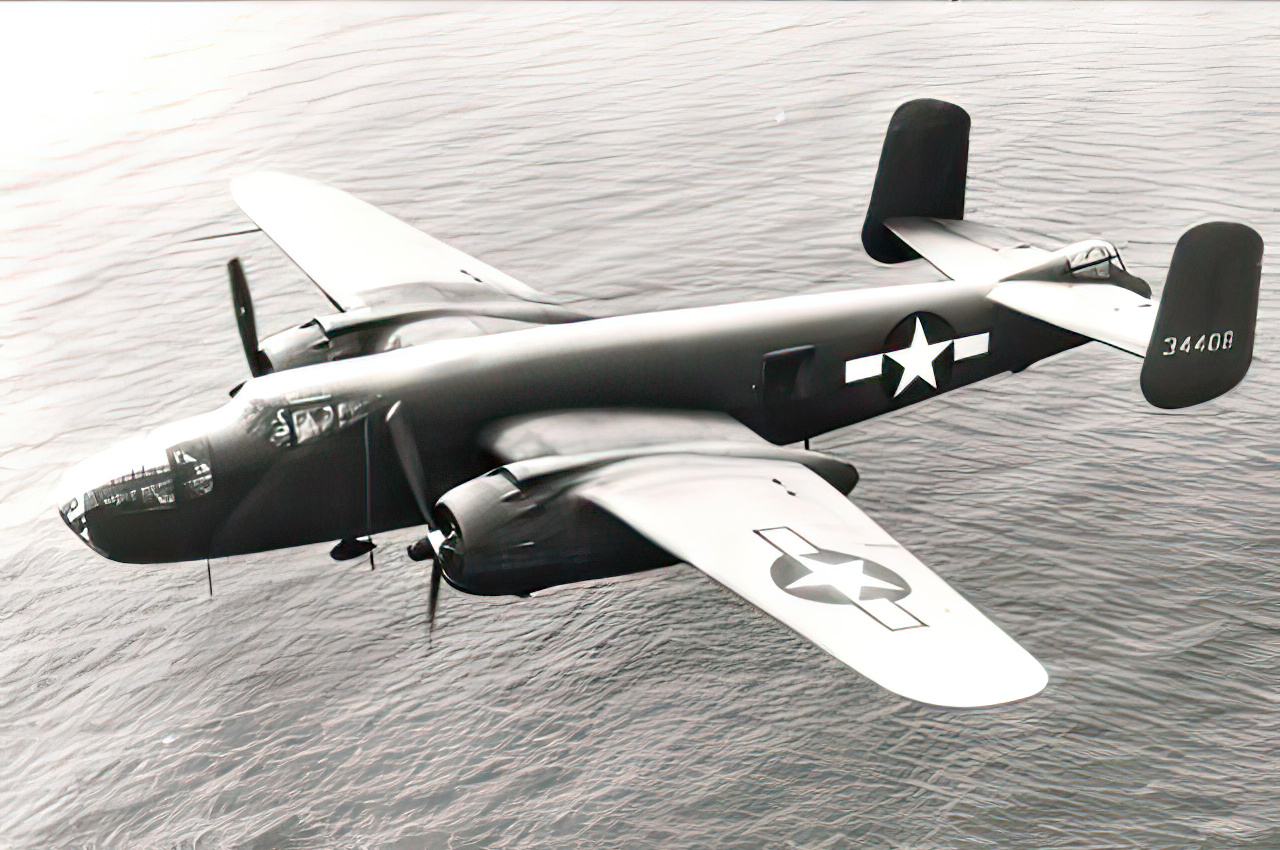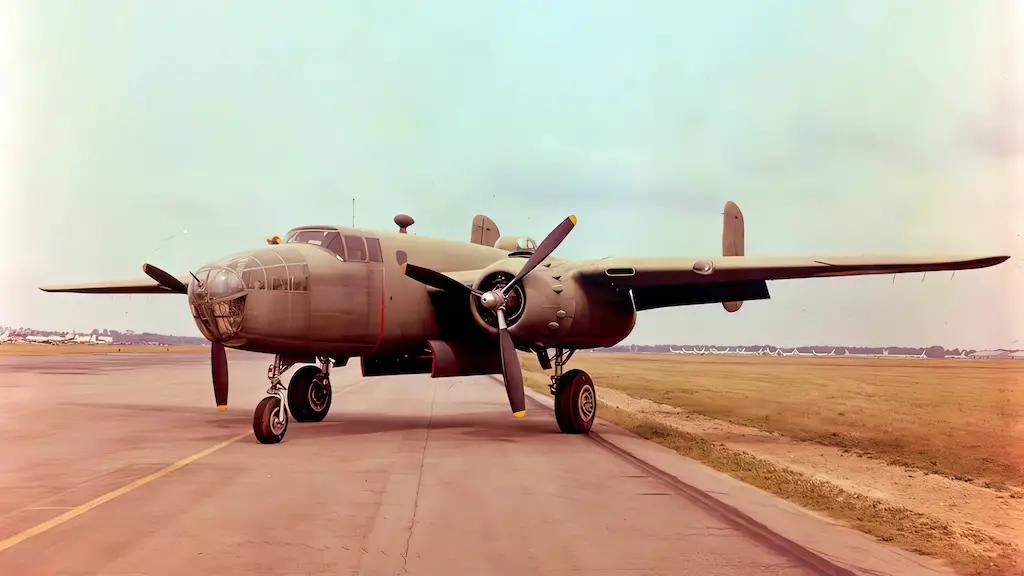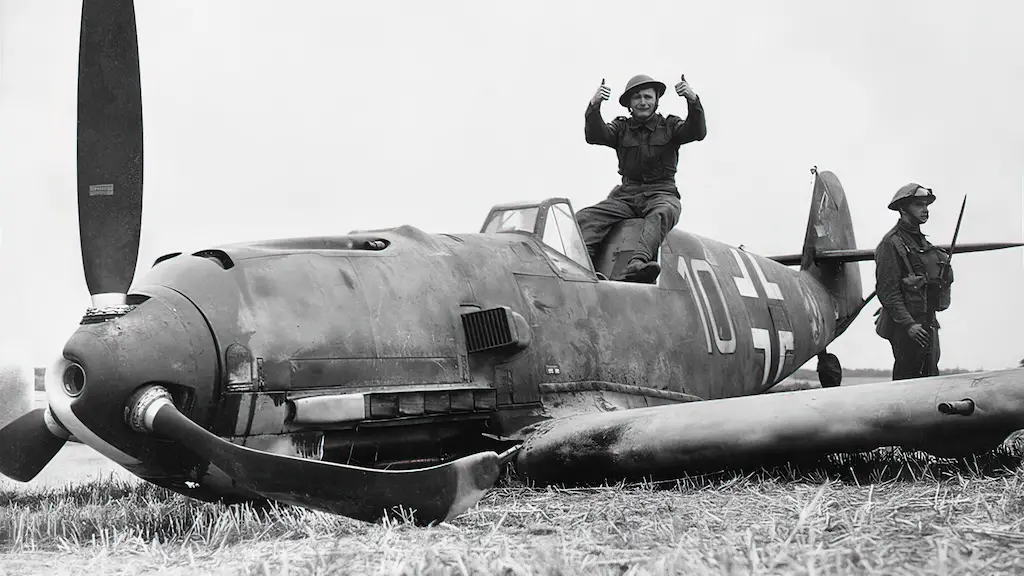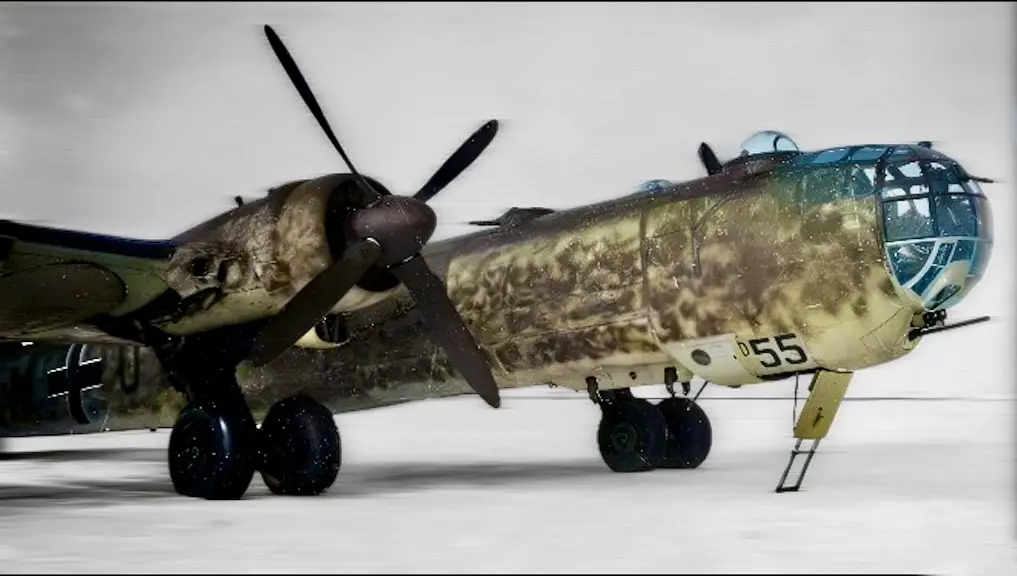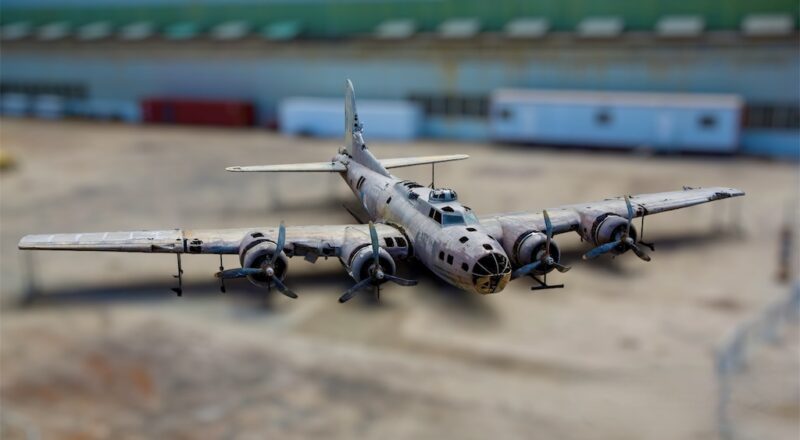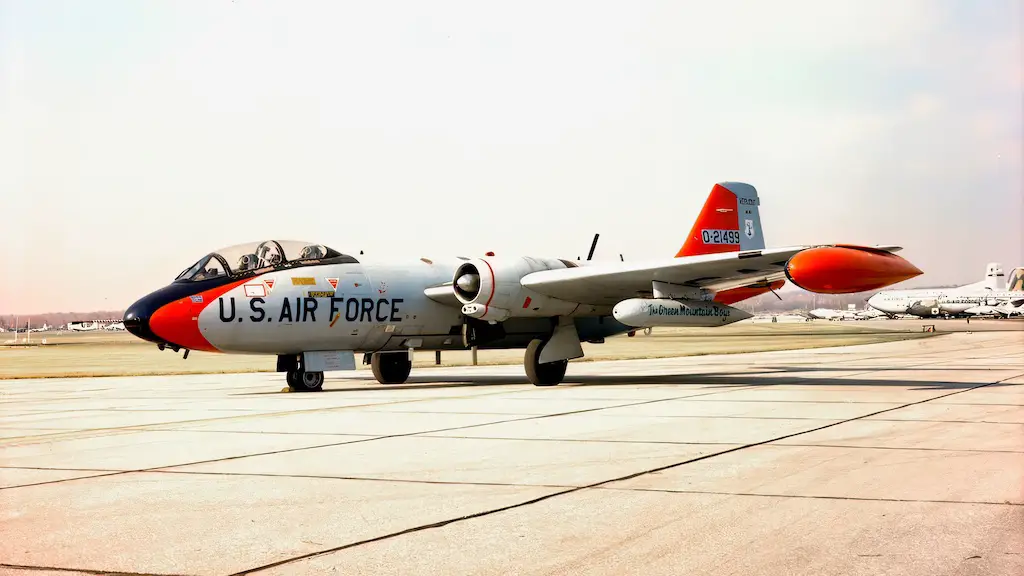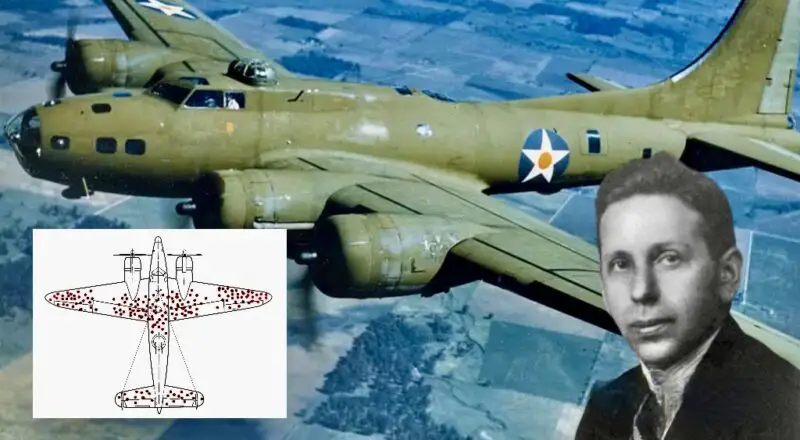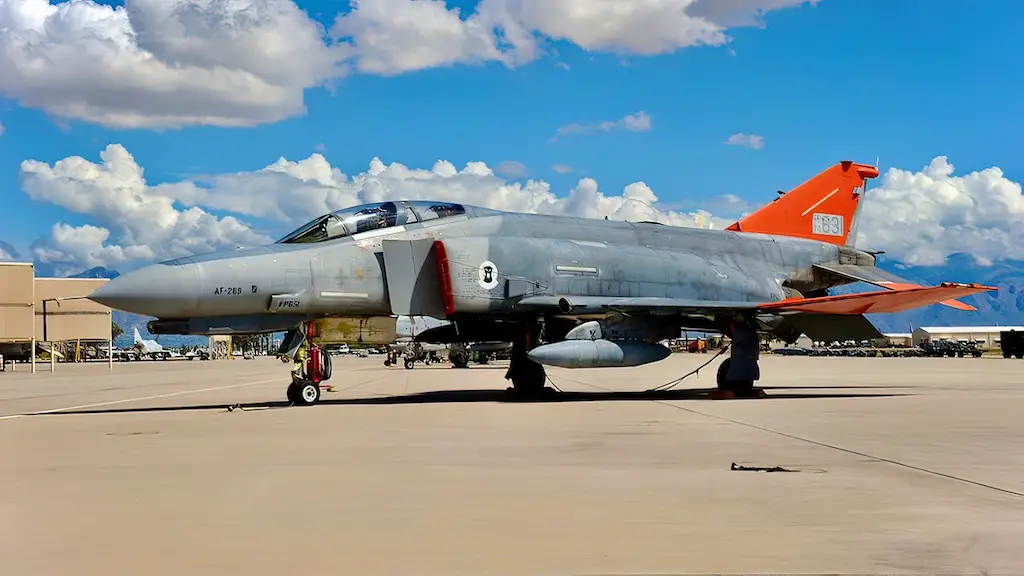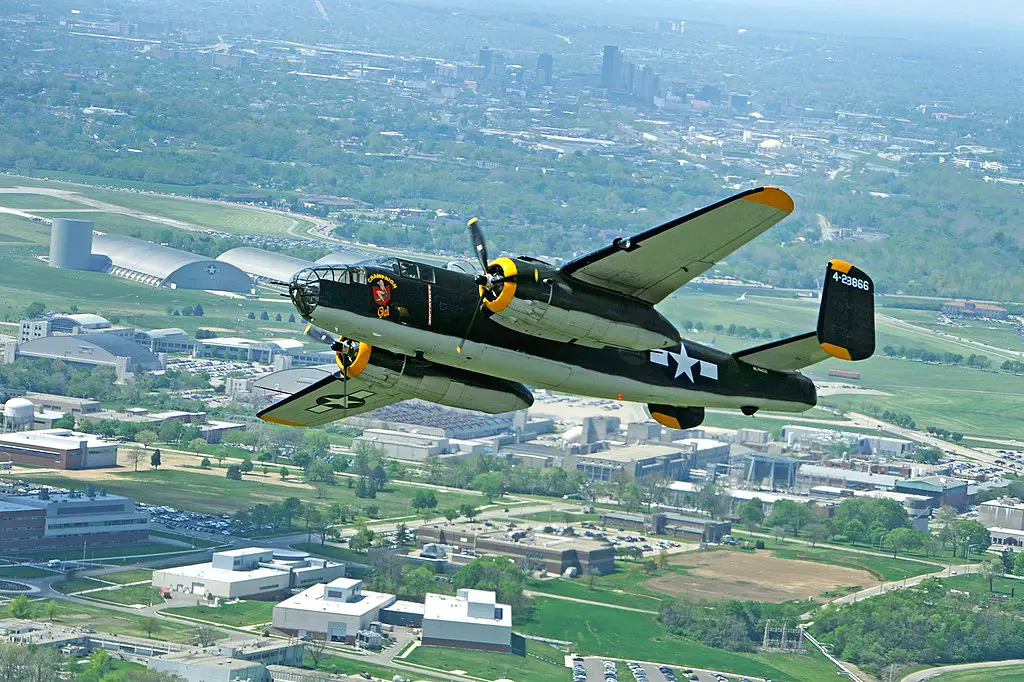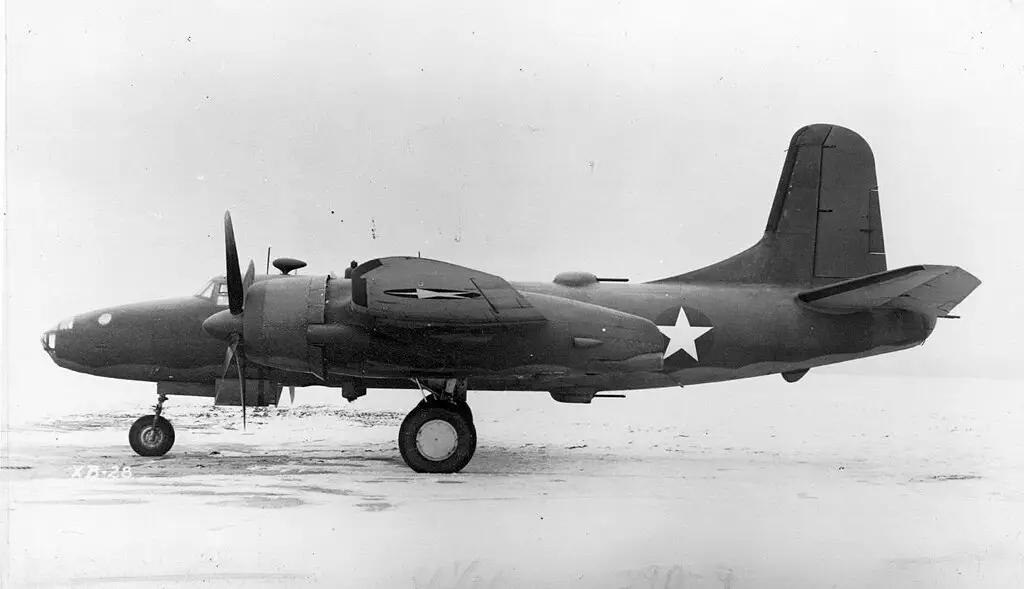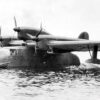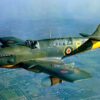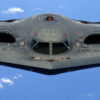“Patches”
Amidst the chaos of World War II’s skies, the B-25 Mitchell, particularly the bomber known as “Patches,” epitomized resilience. This aircraft, marked by 400 bright yellow patches, served as a vivid symbol of survival. Each patch bore witness to encounters with enemy fire, cementing its status as legendary. Completing over 300 missions and surviving six belly landings, “Patches” transcended its role as a mere aircraft, embodying endurance amid adversity.
The U.S. Army Air Corps’ pursuit of a medium bomber capable of delivering significant payloads at high speeds across vast distances catalyzed the B-25 Mitchell’s creation. North American Aviation (NAA) accepted the challenge, utilizing their NA-40B design as a foundation. The resulting aircraft exceeded all expectations, with its high-wing monoplane design, twin tail, and tricycle landing gear, marking a milestone in military aviation engineering.
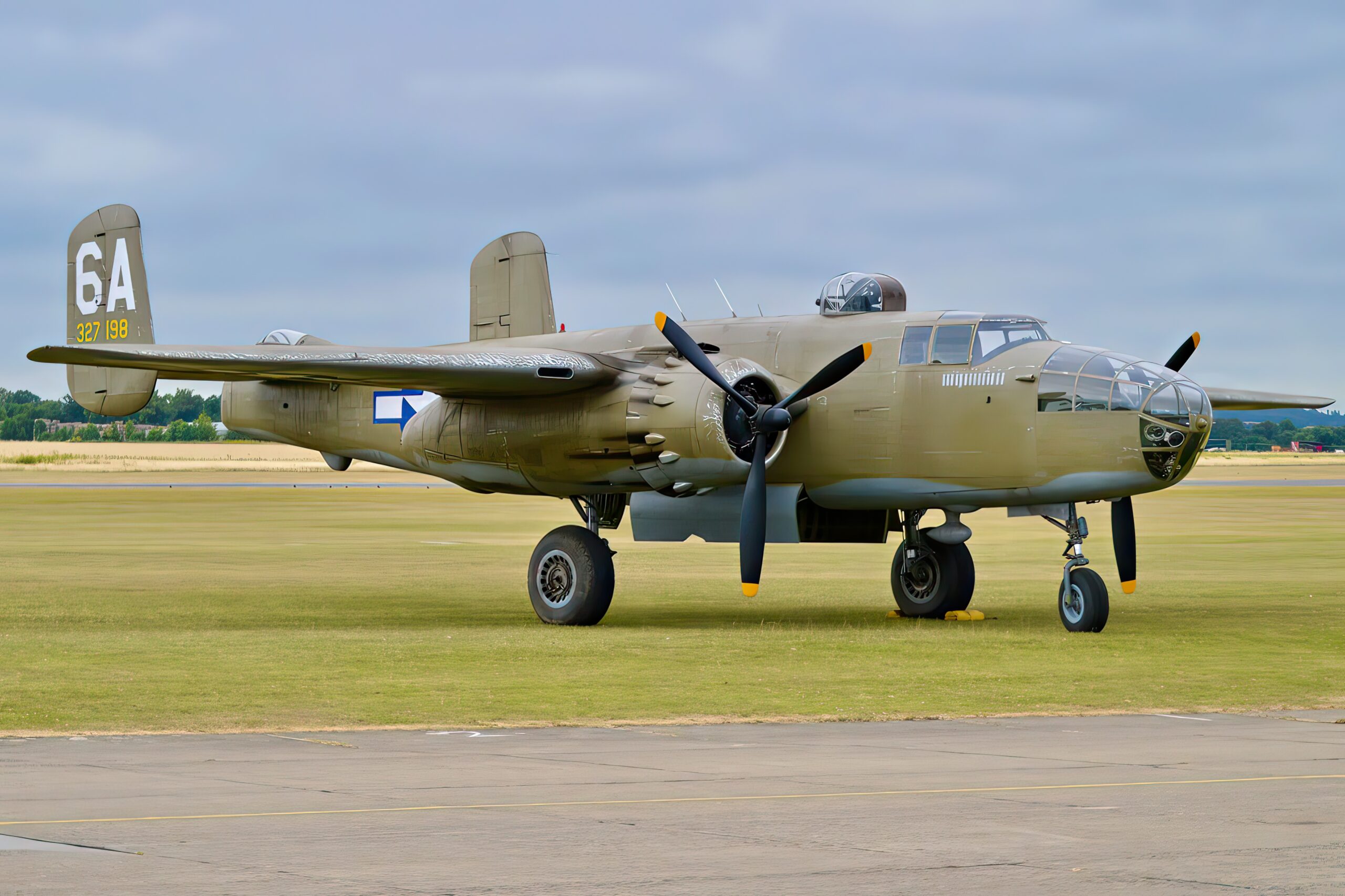
A Journey of Evolution
Since its initial flight in 1940, the B-25 Mitchell has undergone continuous evolution. Early versions encountered stability issues, leading NAA to develop the distinctive gull-wing shape. The war’s escalating demands spurred the development of various models, each tailored to specific combat roles. The B-25C and D series became formidable adversaries, and the G and H models, armed with a 75mm cannon, highlighted the aircraft’s capacity for adaptation.
The Tokyo raid, led by Lieutenant Colonel James Doolittle, stands as one of the B-25’s most iconic undertakings. This bold mission, involving B-25s launching from an aircraft carrier, demonstrated the aircraft’s unique capabilities. Though the raid inflicted minimal physical damage, it had a significant psychological impact, demonstrating to the world that America could retaliate.
Demonstrating Unmatched Durability
“Patches,” a B-25C riddled with over 400 flak holes, exemplified the Mitchell’s durability. Its distinctive appearance, highlighted by zinc chromate primer on each patch, along with the extensive efforts to maintain flight, showcased the aircraft’s exceptional resilience and adaptability. The robust design of the Mitchell and the skill of its crews made “Patches” a living testament to the aircraft’s ruggedness.
The B-25 Mitchell excelled in combat due to its unparalleled versatility. It executed precision strikes, strafing runs, and skip bombing with deadly accuracy. The aircraft’s flexibility, demonstrated through modifications for varied combat situations, cemented its role in securing Allied victory. Beyond American use, Allied nations leveraged the B-25’s capabilities across different war theaters.
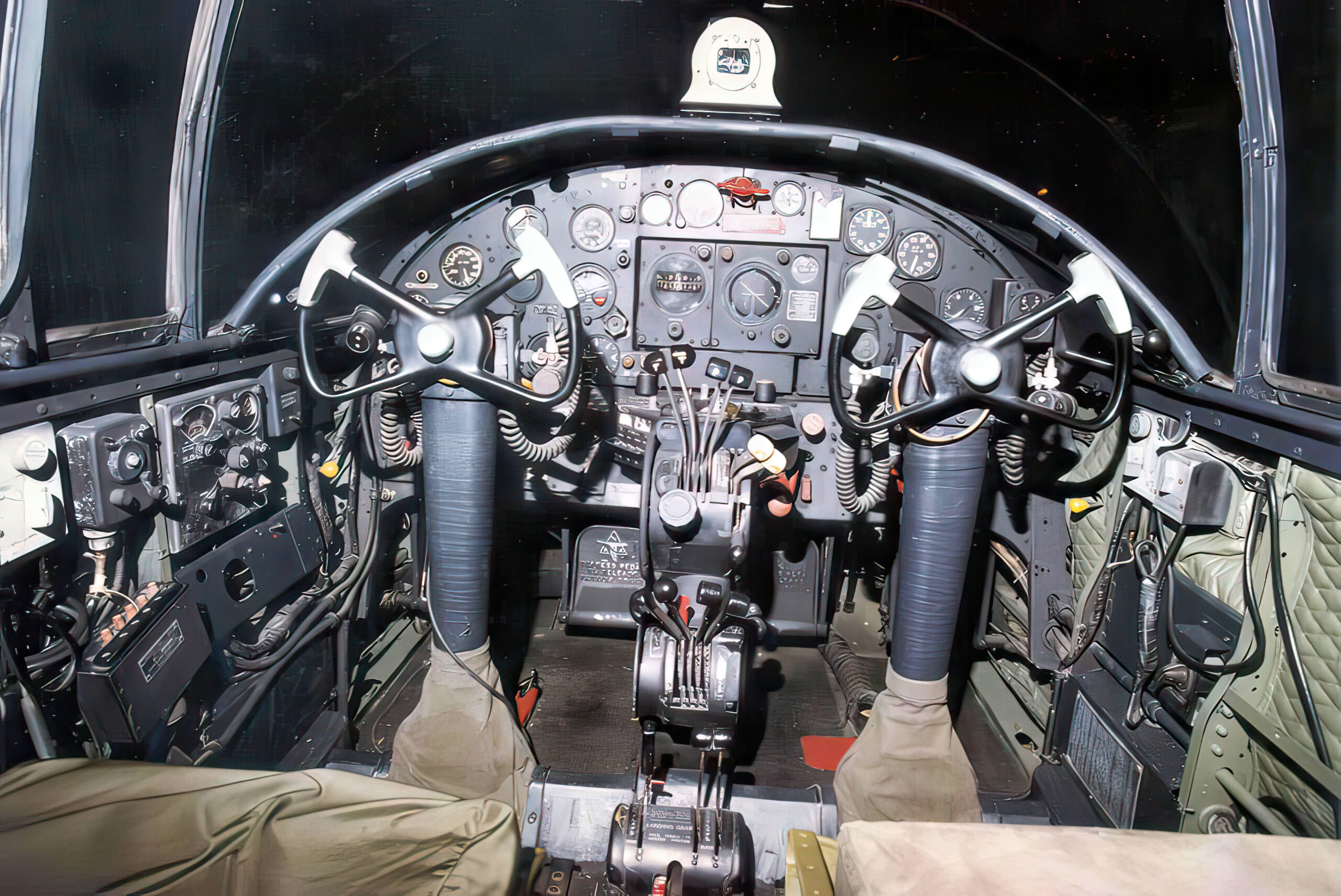
Sustaining a Legacy of Adaptability
Post-war, the B-25 Mitchell continued to serve in diverse roles, from reconnaissance to pilot training. The TB-25L trainer’s introduction in 1952 underscored the aircraft’s enduring contribution to aviation. Furthermore, the North American XP-28 Dragon project, while not reaching combat, highlighted the B-25’s significant role in the advancement of military aviation technology.
The B-25 Mitchell’s combat effectiveness and lasting legacy affirm its place as a symbol of American innovation and the relentless spirit of World War II service members. From “Patches,” the emblem of survival, to its critical missions, the B-25 stands as a monument to the resilience and versatility of this iconic aircraft. Its story, interwoven with the fabric of military history, continues to command awe and respect for this unparalleled warbird that navigated through adversity to secure its legendary status.
